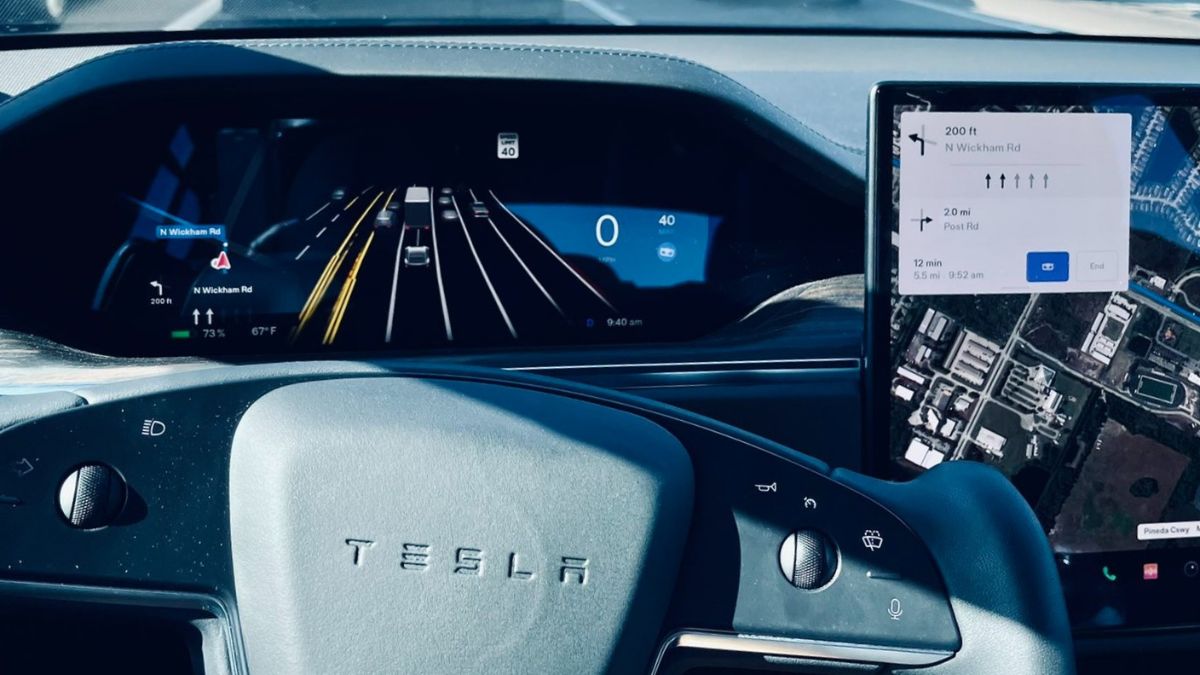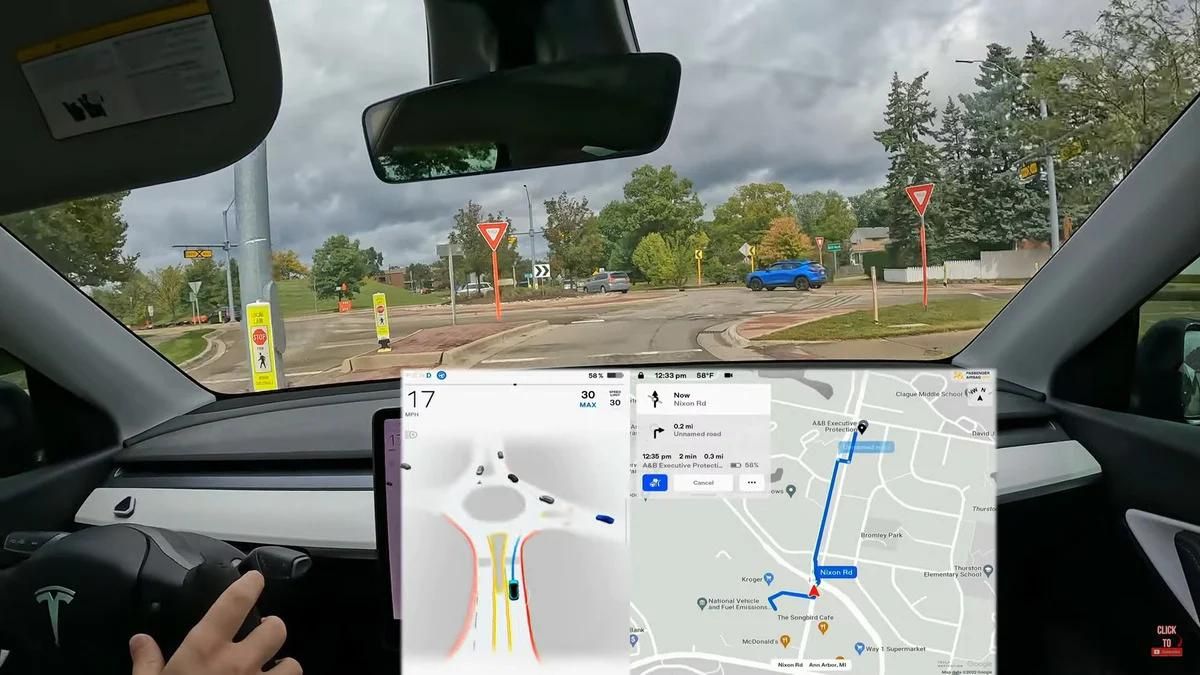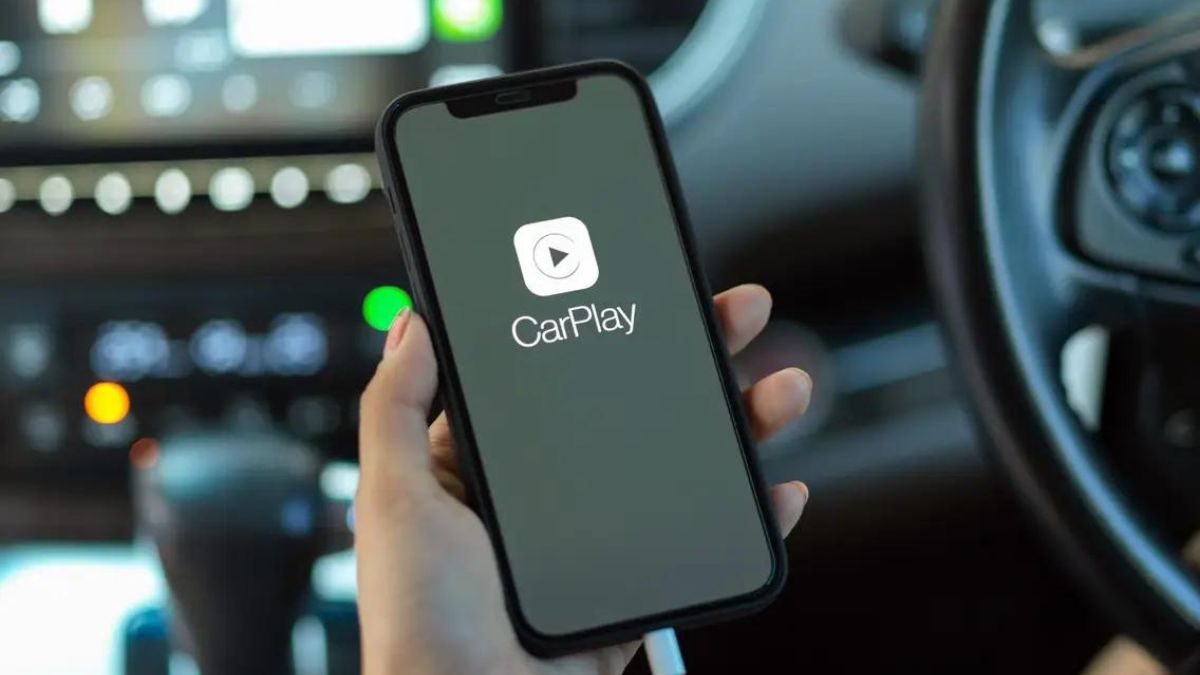Elon Musk To Remove FSD Beta Restrictions With Tesla’s Single Stack v11 Launch
November 25, 2022 By Aaem Joshi

(Image Credit Google)
Elon Musk made the most recent version of the FSD autonomous driving software available to everyone in the US and Canada who has paid for it, even though the most major Tesla autonomous driving software update ever is still weeks or days away. There are no annoying Safety Score shenanigans, but users of the 2022.40 update must wait until V11 is released in their branch.
Elon Musk said on Twitter that anyone in North America who wants to purchase Tesla's FSD Beta autonomous driving service can now do so as of right away. Of fact, it's a little more complicated than that since some previous purchases who paid for the Full Self-Driving Beta software are still awaiting the software update that will allow it on their vehicles, but at least they will now be aware of their eligibility.
[caption id="attachment_66076" align="aligncenter" width="1200"]

image: Tesla[/caption]
Additionally, those using the newest 2022.40 software branch will have to wait until the single-stack FSD Beta v11 is made available there. However, Elon Musk says that for those using the 36 branch, "Full Self-Driving Beta is now available to anyone in North America who requests it from the car screen, assuming you have purchased this option." By resetting its Safety Score strikes and vowing to introduce a true self-driving service by the end of the year, Tesla has been gradually prepping for the wider rollout.
No matter how superior Tesla's autonomous driving software is compared to the competition, it is still required as a Level 2 solution and will require a driver's presence for the foreseeable future, so it appears that Elon Musk got ahead of himself with that Level 3 request. Regulators won't grant Tesla a fully autonomous status anytime soon, let alone in the rest of the world where the software isn't even yet available, despite the fact that it has millions of kilometers logged into the self-driving AI mainframe in the US.
[caption id="attachment_66080" align="aligncenter" width="1200"]

Image: Dirty Tesla/YouTube[/caption]
Tesla still intends to release the finished single-stack autonomous driving model with the FSD Beta v11 presumably in time for the holiday shopping frenzy in order to make up for its Level 3/4 regulatory certification challenges.
According to the V11 release notes, this could be the biggest Tesla self-driving update yet, which is why we're announcing a wider availability:
- On-highway FSD Beta activation. This replaces the heritage highway stack, which is more than four years old, and combines the vision and planning stack on and off the highway. The legacy highway stack, which was designed to handle straightforward lane-specific operations, continues to rely on a number of single-camera and single-frame networks. With the addition of more intelligent behaviors, more fluid control, and better decision-making, FSD Beta's multi-camera video networks and next-generation planner, which enables more complicated agent interactions with less reliance on lanes.
- Better side camera calibration, 260k more video training clips, a 4x increase in transformer spatial resolution, and increased recall for nearby obstacles and precision in adverse weather conditions for the occupancy network (real-world and simulation).
- A smoother and safer experience is made possible by improved merging behavior that takes advantage of lane geometry and lane boundaries, association with coarse map information, and enhanced gap selection algorithms.
- Highway behavior was included with a smooth hand-off between in-lane offsetting and lane changes as well as offset away from obstructed lanes and general impediments like road debris.
- Improved speed-based lane change judgments to lessen navigational interference and avoid slowing down traffic in fast lanes.
- Decreased sensitivity for lane changes based on speed in CHILL mode.
- Improved lane changes that enable higher jolt motions when necessary to stay on the road or get away from lane obstructions
- reducing the requirement to center between lane lines and permitting lower jerk moves when it is safe to do so can improve the smoothness during highway lane splits.
- By utilizing numerical techniques for more effective computations, trajectory optimization delay was reduced by 20% on average without losing behavior.
Also, Read:
Custom Hoverboard: Powered Entirely by Raspberry Pi
By Aaem Joshi
I am a Journalist who loves digging up stories that remain unheard. Strongly Believe in the knowledge of the social world.


 image: Tesla[/caption]
Additionally, those using the newest 2022.40 software branch will have to wait until the single-stack FSD Beta v11 is made available there. However, Elon Musk says that for those using the 36 branch, "Full Self-Driving Beta is now available to anyone in North America who requests it from the car screen, assuming you have purchased this option." By resetting its Safety Score strikes and vowing to introduce a true self-driving service by the end of the year, Tesla has been gradually prepping for the wider rollout.
No matter how superior Tesla's autonomous driving software is compared to the competition, it is still required as a Level 2 solution and will require a driver's presence for the foreseeable future, so it appears that Elon Musk got ahead of himself with that Level 3 request. Regulators won't grant Tesla a fully autonomous status anytime soon, let alone in the rest of the world where the software isn't even yet available, despite the fact that it has millions of kilometers logged into the self-driving AI mainframe in the US.
[caption id="attachment_66080" align="aligncenter" width="1200"]
image: Tesla[/caption]
Additionally, those using the newest 2022.40 software branch will have to wait until the single-stack FSD Beta v11 is made available there. However, Elon Musk says that for those using the 36 branch, "Full Self-Driving Beta is now available to anyone in North America who requests it from the car screen, assuming you have purchased this option." By resetting its Safety Score strikes and vowing to introduce a true self-driving service by the end of the year, Tesla has been gradually prepping for the wider rollout.
No matter how superior Tesla's autonomous driving software is compared to the competition, it is still required as a Level 2 solution and will require a driver's presence for the foreseeable future, so it appears that Elon Musk got ahead of himself with that Level 3 request. Regulators won't grant Tesla a fully autonomous status anytime soon, let alone in the rest of the world where the software isn't even yet available, despite the fact that it has millions of kilometers logged into the self-driving AI mainframe in the US.
[caption id="attachment_66080" align="aligncenter" width="1200"] Image: Dirty Tesla/YouTube[/caption]
Tesla still intends to release the finished single-stack autonomous driving model with the FSD Beta v11 presumably in time for the holiday shopping frenzy in order to make up for its Level 3/4 regulatory certification challenges.
According to the V11 release notes, this could be the biggest Tesla self-driving update yet, which is why we're announcing a wider availability:
Image: Dirty Tesla/YouTube[/caption]
Tesla still intends to release the finished single-stack autonomous driving model with the FSD Beta v11 presumably in time for the holiday shopping frenzy in order to make up for its Level 3/4 regulatory certification challenges.
According to the V11 release notes, this could be the biggest Tesla self-driving update yet, which is why we're announcing a wider availability:






